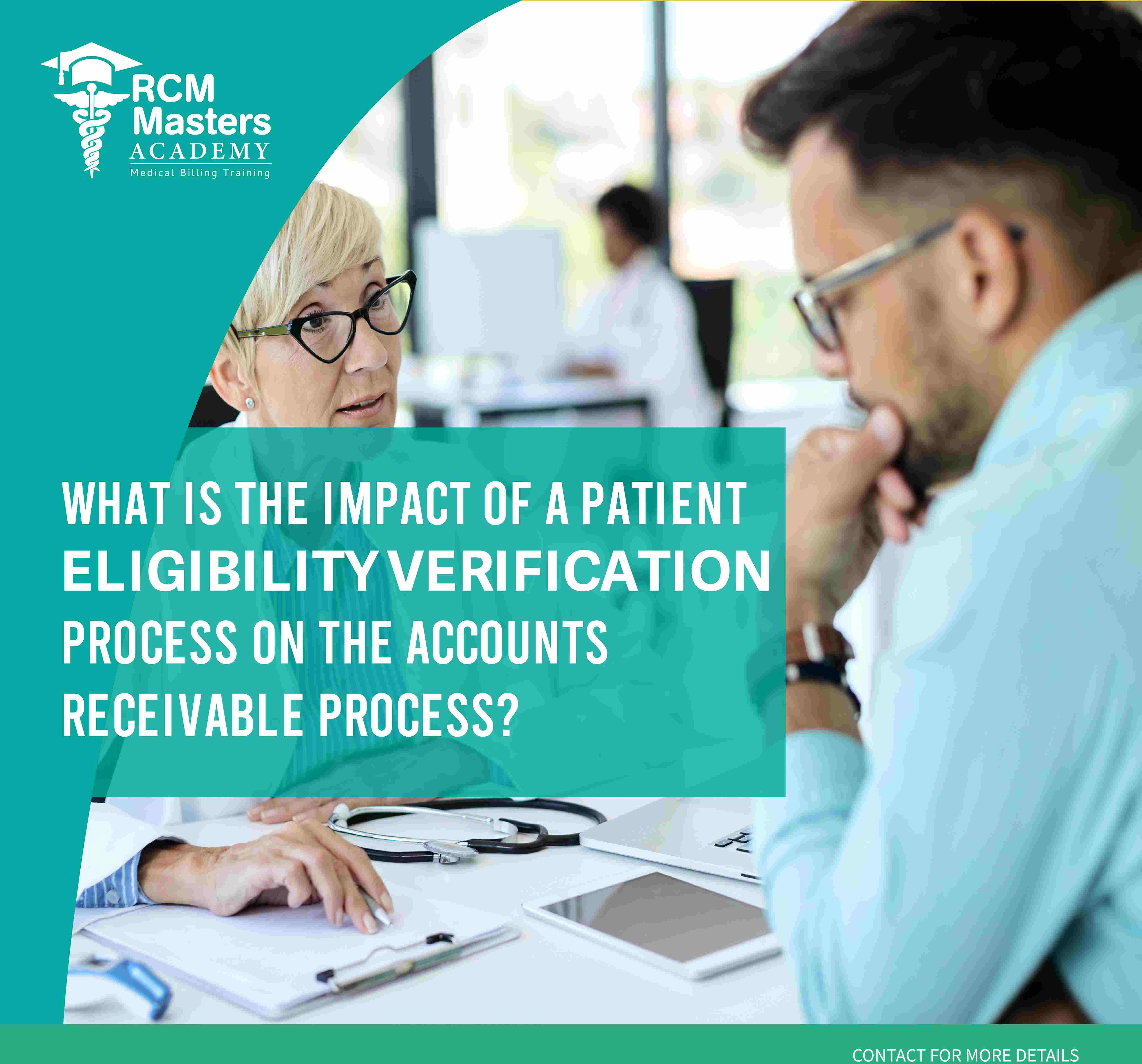 info@rcmmastersacademy.com
info@rcmmastersacademy.com

A patient eligibility verification process is an essential component of any medical practice's revenue cycle management (RCM) strategy. It is the process of verifying a patient's insurance coverage and determining their financial responsibility for services rendered. This process has a significant impact on the accounts receivable (AR) process of a medical practice, as it plays a critical role in reducing denials, improving cash flow, and minimizing bad debt.
We'll explore the impact of a patient eligibility verification process on the AR process in detail.
Reduction in Denials: One of the primary benefits of a patient eligibility verification process is the reduction in denials. When a patient's insurance coverage is verified before the services are rendered, it ensures that the claim submitted to the insurance provider meets all the requirements for payment. This reduces the likelihood of claim denials due to incomplete or inaccurate information. Denials can significantly impact the AR process as they increase the time and effort required to follow up with insurance providers to get claims paid.
Improved Cash Flow: Patient eligibility verification also plays a crucial role in improving cash flow. When insurance coverage is verified before services are rendered, the medical practice can identify patients with high deductible plans or those with outstanding balances. This information allows the practice to collect payment at the time of service, reducing the amount of time it takes to collect payment and improving cash flow.
Minimizes Bad Debt: A patient eligibility verification process can also minimize bad debt, which is a significant problem for medical practices. When a patient's insurance coverage is verified before services are rendered, the practice can identify patients who are responsible for a large portion of the cost of their treatment. This information allows the practice to work with the patient to set up a payment plan or make other arrangements to ensure that the bill is paid. This reduces the likelihood of the bill going unpaid, which can lead to bad debt.
Improves Patient Satisfaction: Patient eligibility verification can also improve patient satisfaction. Patients want to know the cost of treatment upfront so they can make informed decisions about their care. When a medical practice verifies a patient's insurance coverage and informs them of their financial responsibility before services are rendered, it helps to eliminate surprises and prevent billing issues. This leads to a better patient experience, which can result in increased patient loyalty and referrals.
Increases Efficiency: Another benefit of a patient eligibility verification process is the increased efficiency it provides. When insurance coverage is verified before services are rendered, it reduces the amount of time it takes to process claims and collect payment. This streamlines the AR process and allows medical practices to focus on other aspects of their business, such as patient care and practice growth.
Conclusion: A patient eligibility verification process has a significant impact on the AR process of a medical practice. It helps to reduce denials, improve cash flow, minimize bad debt, increase efficiency, and improve patient satisfaction. By implementing an effective patient eligibility verification process, medical practices can optimize their RCM strategy and ensure that they are getting paid for the services they provide.
You can enroll for our Online Medical Billing Training here: